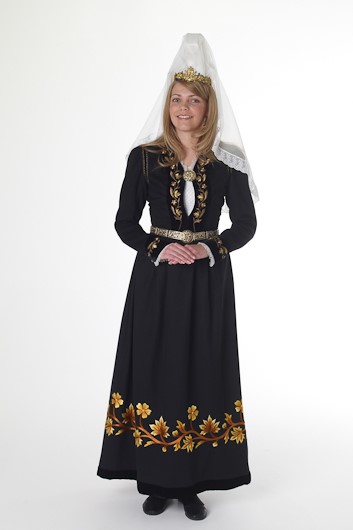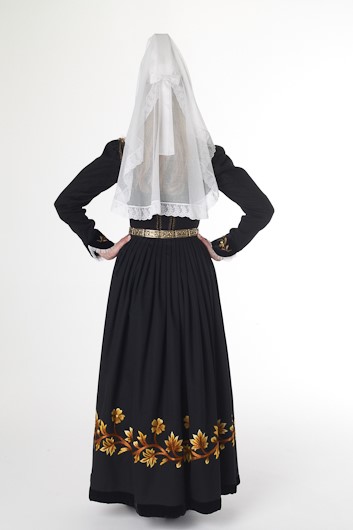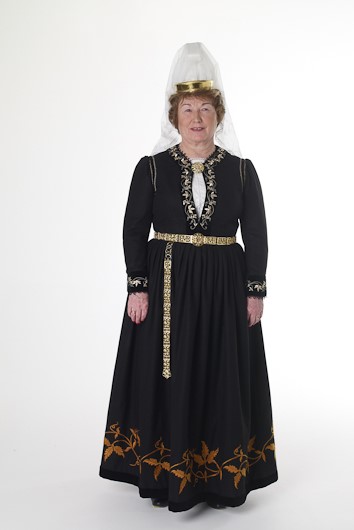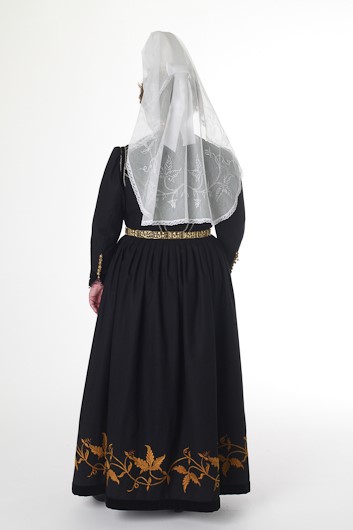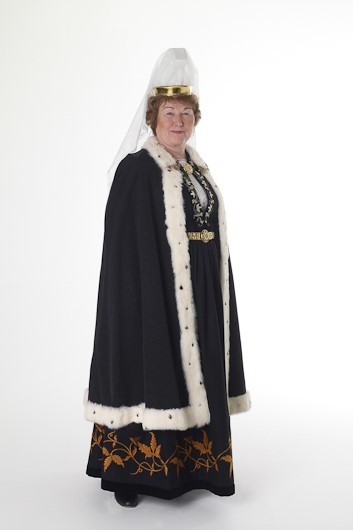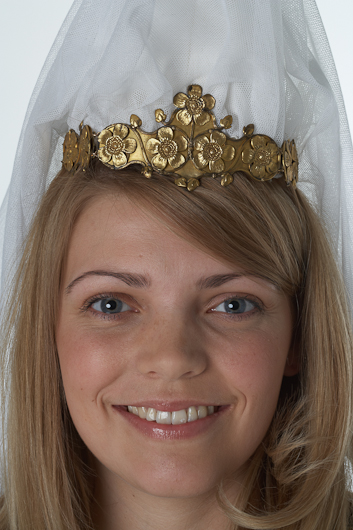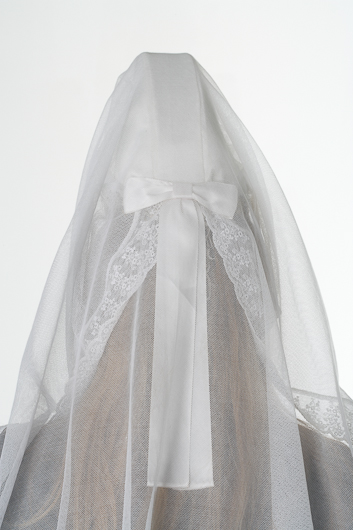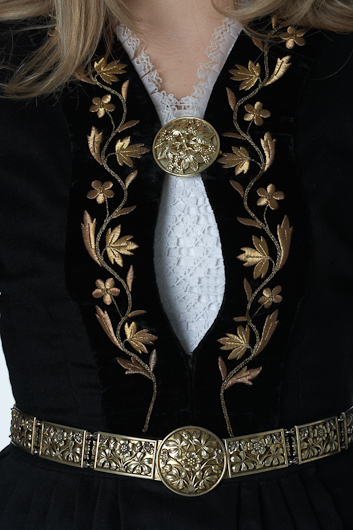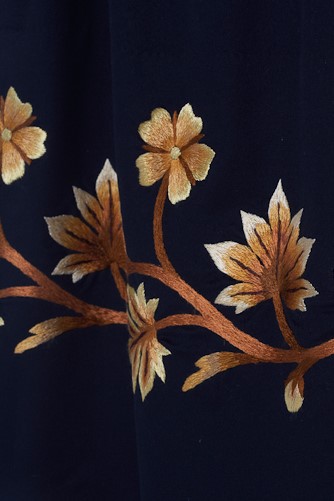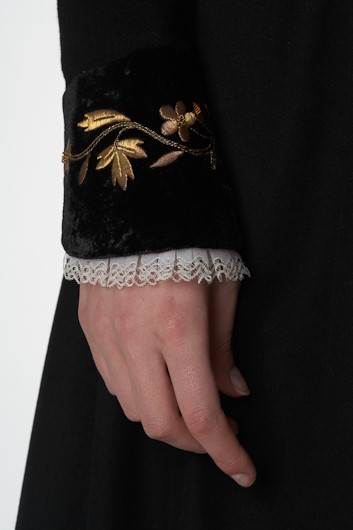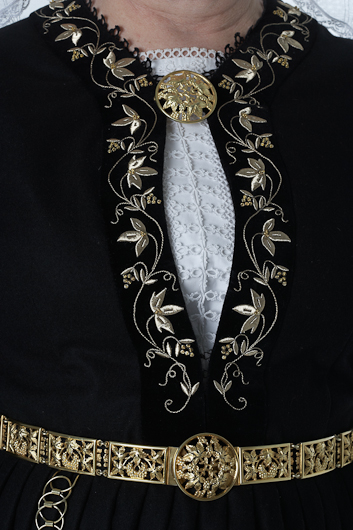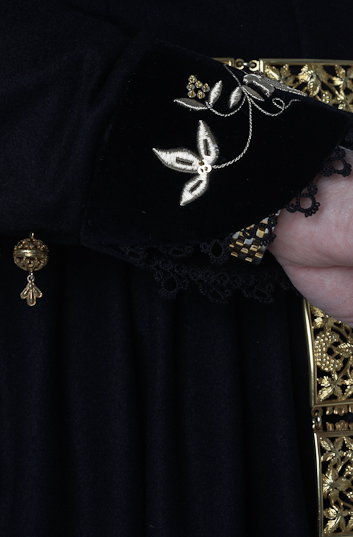Skautbúningur costume
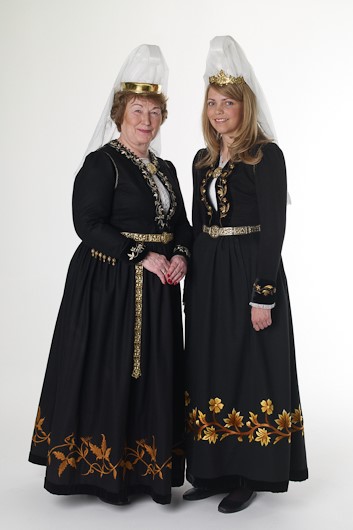 Sigurður Guðmundsson, known as “the Painter,” designed the formal skautbúningur costume in 1858-60, as part of his contribution to raising national consciousness and pride in Iceland. The costume was of black woollen fabric, with a tightly-fitted waist-length jacket with long, close-fitted sleeves. The long skirt was gathered all around, but with fuller gathers at the back. The neckline and cuffs were trimmed with white lace. The jacket was hooked together at the bottom, and pinned together at the neck with a brooch. It was open at the breast, where a white stomacher was visible, decorated with lace or embroidery. The plackets, neckline and cuffs had wide velvet ribbons embroidered with tendrils of gold- or silver-thread embroidery. The hem of the skirt had a deep border of floral embroidery, usually with the same motifs. The embroidery of the skirt was in shaded embroidery, stem stitch, chain stitch or free embroidery. The hem of the skirt was edged with black velvet. A tall white faldur headdress was worn, with a gilt fillet and a veil. Around the waist there was a linked belt, generally with pendant. At the neck there was a brooch, and the sleeves had buttoned cuffs. Women wore black stockings and shoes with the skautbúningur.
Sigurður Guðmundsson, known as “the Painter,” designed the formal skautbúningur costume in 1858-60, as part of his contribution to raising national consciousness and pride in Iceland. The costume was of black woollen fabric, with a tightly-fitted waist-length jacket with long, close-fitted sleeves. The long skirt was gathered all around, but with fuller gathers at the back. The neckline and cuffs were trimmed with white lace. The jacket was hooked together at the bottom, and pinned together at the neck with a brooch. It was open at the breast, where a white stomacher was visible, decorated with lace or embroidery. The plackets, neckline and cuffs had wide velvet ribbons embroidered with tendrils of gold- or silver-thread embroidery. The hem of the skirt had a deep border of floral embroidery, usually with the same motifs. The embroidery of the skirt was in shaded embroidery, stem stitch, chain stitch or free embroidery. The hem of the skirt was edged with black velvet. A tall white faldur headdress was worn, with a gilt fillet and a veil. Around the waist there was a linked belt, generally with pendant. At the neck there was a brooch, and the sleeves had buttoned cuffs. Women wore black stockings and shoes with the skautbúningur.


